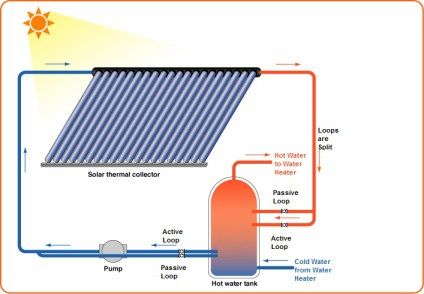Passive Solar Heating System

When sunlight strikes a building the building materials can reflect transmit or absorb the solar radiation.
Passive solar heating system. Passive solar design refers to the use of the sun s energy for the heating and cooling of living spaces by exposure to the sun. Passive solar buildings take advantage of how the sun moves throughout the day with attention to seasonal changes in sunlight to warm living spaces without requiring any mechanical devices or fuel to do so. Each day during the heating season. Instead they take advantage of natural heat flow to distribute warmth.
Passive systems do not use mechanical devices such as fans blowers or pumps to distribute solar heat from a collector. The key to designing a passive solar building is. Passive solar design takes advantage of a building s site climate and materials to minimize energy use. Because of the small heating loads of modern homes it is very important to avoid oversizing south facing.
In addition the heat produced by the sun causes air movement that can be predictable in designed spaces. A well designed passive solar home first reduces heating and cooling loads through energy efficiency strategies and then meets those reduced loads in whole or part with solar energy. This is called passive solar design because unlike active solar heating systems it does not involve the use of mechanical and electrical devices. An example of a passive system for space heating is a sunspace or solar greenhouse.
These basic responses to solar heat lead to design. In passive solar building design windows walls and floors are made to collect store reflect and distribute solar energy in the form of heat in the winter and reject solar heat in the summer.














































